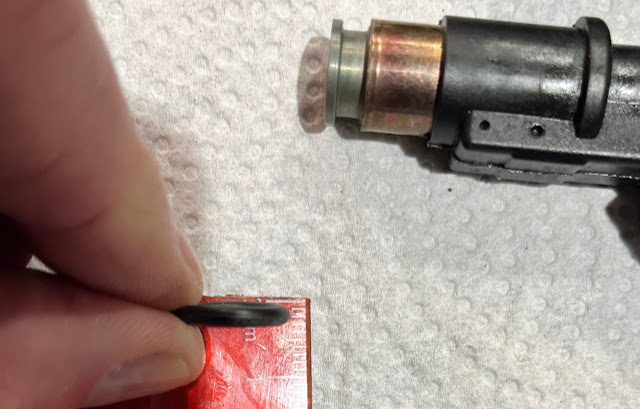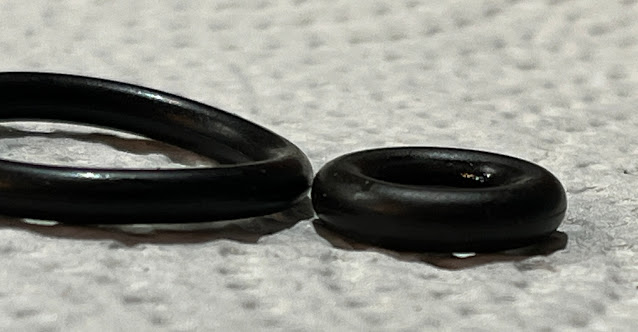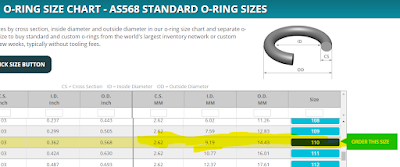If you've never wrapped your head around engine maps, they're not very complicated. Tuneboy does a good job of explaining how it works in their primer that comes with their software.
Back in the day you had a carburetor that used screws and jets to set the amount of fuel that got metered into the engine. If you changed altitude you had to start swapping hard parts (usually the jets that sprayed fuel) to keep the bike running right, and sooner than later you had to manually trim the whole thing to keep it running right. Electronic fuel injection took that all away. A computer under the passenger seat on the Tiger takes inputs from sensors in the air-box (barometric pressure), in each of the three injectors , the fuel pump, radiator (engine temperature) and a crankcase sensor to constantly adjust things to use the most effective amount of fuel to make the bike go. Put another way, carburetors are a mechanical, low resolution solution to feeding fuel into an engine. Electronic fuel injection is a responsive, high resolution fix to the problem of delivering the right amount of fuel to a motor.
 |
| Tuneboy map editor - you can change settings and tell the ECU (electronic control unit) what to do under certain circumstances. |
A fuel map is a spreadsheet of numbers. Sensors feed the computer what RPM the engine is turning at and how much throttle is being asked for and based on the number in the fuel map, the computer delivers a set amount of fuel. The 'fuel map' is literally a map that directs the computer to deliver a set amount of fuel. If you're at high RPM and have just shut off the throttle, a smart EFI system will cut fuel delivery entirely, saving both fuel and emissions, something a carb couldn't manage. If you suddenly give the bike a handful of throttle at low RPM, the map will direct the fuel injectors to deliver an optimal amount of fuel as it picks up speed, whereas a carb will always just send a mechanically set amount of fuel based only on how much wrist you're giving it.
In Tuneboy's system, you can change fueling and ignition maps, and modify things like idle speeds. The issue has been that the only maps I can find for Tuneboy are the stock ones from Triumph, which were set up to favour fuel economy and emissions over smoothness and drive-ability. Meanwhile, TUNEECU (if you can navigate their 90's style web design and atrocious apostrophe use) offers you modified tunes that can smooth out your lumpy OEM map. |
| Even though the old vacuum pipes held vacuum, I swapped them out for some similarly sized clear fuel line I had (you can see them going from above each injector to the idle stepper motor. The TUNEboy software also comes with a diagnostics tool (with very cool 90s graphics!) that lets you test the radiator fan, idle stepper motor (which moves up and down modulating the vacuum in that black thing to the left/bottom in the picture) and the RPM gauge. LINKS You can find TUNEboy here: https://www.tuneboy.com.au/ It comes with a cable that'll connect to your Triumph and is easy to get going, and comes with all the stock tunes. It also lets you tune on a dyno, if you're minted. It ain't cheap, but the minted guy who bought my bike new was, so he sprung for it and I'm still enjoying his largess over a decade later. TuneECU can be found here: https://www.tuneecu.net/TuneECU_En/links.html Try to get past the out of control apostrophe use - they're better at software than they are at the speaking English goodly. The older version is free, but finicky with Windows' old serial port drivers. You can buy the app on the Android store for fifteen bucks, which seems perfectly reasonable. You can then connect via bluetooth from a phone or Google tablet, though I understand you miss some connectivity that way. It gets tricky these days finding the On Board Diagnostics (OBD) serial cable you need to connect the bike to the PC. You can buy 'em from the UK, where people like fixing things. CJ Designs in Wisconsin will sort you out with one too: https://cjdesignsllc.com/?s=TuneECU The modded engine maps for Triumphs on TuneECU can be found here: https://www.tuneecu.net/Custom_Tune_list.html The TuneECU page goes into detail about how you might use the TUNEboy cable, but it requires so much messing around with knocking default Windows drivers out of the way and forcing others on that I wouldn't bother (I didn't). |


















































